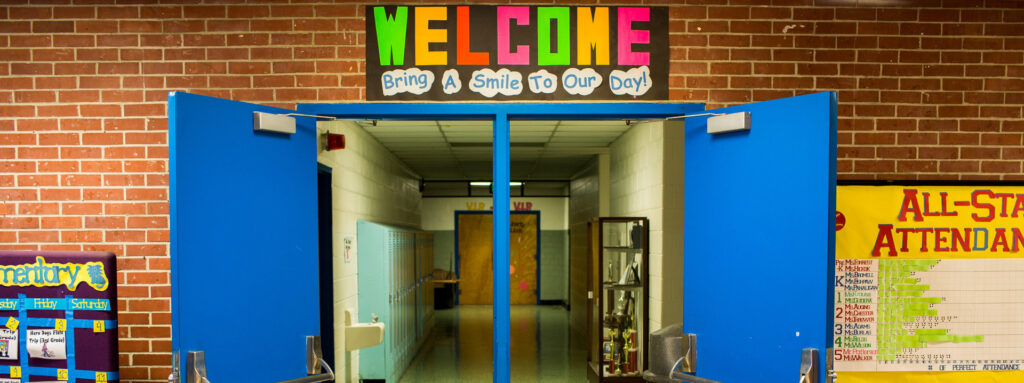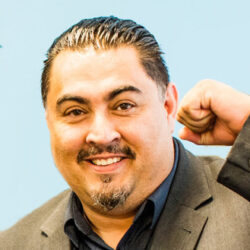Dr. César A. Cruz is one of TNTP’s 2016 Bridge Fellows, and the founder of Homies Empowerment, an Oakland, California-based community program created in 2009. He spent his fellowship year visiting schools and community organizations across the country to ask kids—in particular, students struggling in school, recent drop-outs, and gang members—to describe their dream school.
Recently, Dr. Cruz's vision for Homies Empowerment School—a school based on what he’s learned on this listening tour—took top honors at a Kapor Center for Social Impact “Startup Weekend,” winning him a trip to New Orleans for the 4.0 School Essentials program and coaching sessions with Educate78’s school design lab and the Stanford Design School.
What if when we caught a young man selling drugs at school, instead of sending him to the principal’s office, we sent him to Harvard Business School?
[subscribe]
Of course, I’m not talking about rewarding kids for selling drugs—I’m talking about taking notice of their talents and guiding them to use these talents in ways that are safe and beneficial for them and their communities. Unfortunately, as educators, we don’t often think this way. We don’t think, “Let's welcome drug dealers and gang members to our schools and help them make the most of their business skills!” Instead, we call these kids “thugs” and “criminals,” and write them off.
We also can’t ignore the fact that despite decades of gang prevention work, the number of young gang members in this country hasn’t budged much in the past 20 years. So, it seems if we want to keep kids in class and out of gangs, we should stop demonizing gang members, and start figuring out what we can learn from them when it comes to making our schools more welcoming.
That’s what we’ve been trying to do since 2009 with our community program, Homies Empowerment, and what we hope to fully realize with the Homies Empowerment School.
Of course, gang involvement is dangerous and I’d rather kids stay away from it all together—but any real solution has to start with taking the time to understand why someone would want to join a gang. I often say that there are more parallels between gangs and healthy empowerment programs for kids, like Girl Scouts, than many realize. Girl Scouts sell products and wear a uniform; they have to put in work and be organized and disciplined. What if some young people are getting the same benefits from Girl Scouts that others are getting from gangs? We realize there are a number of young people who are desperately looking for a sense of belonging, a sense of community, a big brother or big sister, rites of passages, and a place they think is cool.
We want to be all those things and welcome young people that may not have felt welcomed at school in the past. We're not trying to fix you; we're not trying to change you; we want you just as you are. To do this, we’re focused on six things young people have shown us are crucial to their growth and learning, six things we believe will provide our students with the greater sense of self and belonging they need to grow:
- Culture as healing. When a youngster learns about who they are—through ethnic studies or queer studies, for example—they’re able to see their culture and their roots as valuable, just as valuable as anyone else’s. This gives them something to stand for, and therefore a greater sense of purpose when it comes to everything they do, including pursuing their education.
- Emancipation. We understand youth development and kids’ desire to be independent. We want to encourage this, whether through giving kids a chance to travel the world or helping them get a driver’s license. This is very much about transitioning our students into adulthood and valuing them both as children and as young people on the path to becoming adults.
- Care management. When we think about care management, we think about Maslow's hierarchy of needs and helping young people meet those needs, whatever that looks like for them. This might mean classes in self‑discovery and resilience but, also, simple things like having bus passes, a place to sleep, access to food, and access to funds. We want to guide students in meeting their own needs—all of them—from basic survival all the way to self-actualization.
- Exploring careers, not jobs. We prefer to say “life's purpose” or “life's calling,” but the world thinks of them as careers. We want to give our students access to internships—that are paid—that allow them to explore possible career paths. This is an important part of helping students meet their survival needs and discover who they are and what motivates them.
- Self‑expression through the arts. Utilizing different art modalities, we want to give young people space to find their voice and develop their talents. We want to give students the chance to explore a variety of art forms, from orchestral classical music to art forms that have been historically demonized, like DJ Afrika Bambaataa’s five pillars of hip-hop, showing kids they are valued for who they are, whoever or whatever that might be.
- Physical movement as healing. This is all about self‑care through sports, developing team unity through sports, and fostering self-exploration and expression through culturally relevant dance. We want to acknowledge where kids are when it comes to their developing minds and bodies and help them recognize and harness all the power they have.
[related]
At Homies Empowerment, just like we understand that a kid might join a gang for some of the same reasons another kid might join Girl Scouts, we understand that graffiti and corporate billboards are the same things. Corporate billboards want to be noticed and seen—just like our youngsters.
Kids generally tag four types of things: They tag their names, because they’re proud of their names and want to be known. They tag the names of their neighborhoods and blocks, because they're proud of those blocks and want to express that. They tag “Rest in Peace” and the names of lost loved ones, because they’re in a deep place of mourning and want you to understand their sadness. And the other thing they tag is, “Free so-and-so.” One of their friends, one of their community members, has been locked up, and they desperately want you to help free them.
We see the writing on the wall, we value the writing on the wall, and we want to honor the writing on the wall. We want to deal with the “Rest in Peace.” We want to deal with freedom. We want to say, “You matter and your name matters and your neighborhood matters and you are welcome here.” Most places call that vandalism, but we say it's self-expression from young people who want to be heard, who want to mourn, who want to be seen—so, we don’t call it vandalism, we call it healing.
The Bridge Fellowship application is launching later this summer. Subscribe here to be notified when it does.





